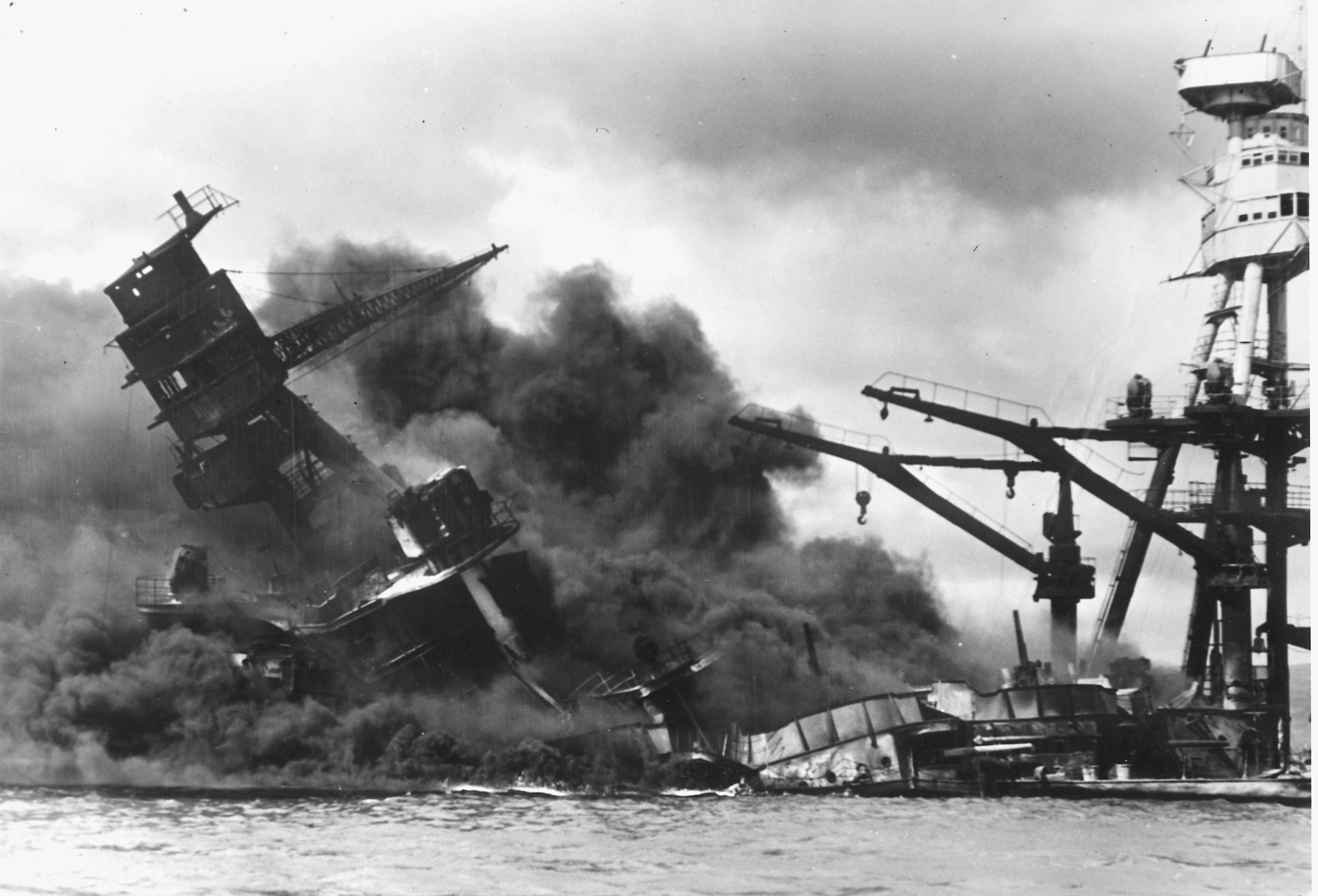On December 7th, 1941, 353 Imperial Japanese planes appeared across the early morning skies of Hawaii. By the end of the day, 2,403 Americans perished with a thousand more wounded and almost all present military assets at Naval Station Pearl Harbor shattered. Caught unsuspecting on its own soil, the United States entered World War II; this rare venture into a truly global affair would set the course for a new era of US global domination. This year marks the 75th anniversary of the attack, one credited with the transformation of the US Navy (and later other leading navies of the world), the centralization of the US intelligence community, and the ascension of the nation to the top of world politics as a superpower.
[eltdf_separator class_name=”” type=”normal” position=”center” color=”” border_style=”” width=”” thickness=”” top_margin=”” bottom_margin=””]
Japan focused its assault on Pearl Harbor’s eight battleships, forcing seven out of service temporarily. For Japan, the attack was a tactical success, especially given its belief that the decisive Pacific battle would come down to battleships. Fortunately for the United States, all three of its Pacific Fleet’s carriers remained untouched as they were away at the time. The result was a major transformation of the US Navy.
[eltdf_separator class_name=”” type=”normal” position=”center” color=”” border_style=”” width=”” thickness=”” top_margin=”” bottom_margin=””]
While the US Navy’s transition from battleships to carriers was already underway, the attack had big repercussions. Left with no choice but to fight with carriers, the United States hastened its naval transformation by necessity, not choice. Throughout the war, the carriers impressed upon US leaders their aircraft’s superiority in range, flexibility and accuracy over battleships’ artillery. Just six months later at the Battle of Midway, Japan lost four carriers and all initiative in the Pacific, unable to match numbers with US carriers.
[eltdf_separator class_name=”” type=”normal” position=”center” color=”” border_style=”” width=”” thickness=”” top_margin=”” bottom_margin=””]
The primacy of aircraft carriers has lasted into the present. They have become the flagships of the world’s strongest navies, demonstrating their unrivaled ability to project power abroad anytime, anywhere, especially with increasing ranges of military aircraft; this ability also defines a navy’s blue-water status (ability to operate across deep waters on open ocean, usually with at least one aircraft carrier), an aspiration for many nations.
[eltdf_separator class_name=”” type=”normal” position=”center” color=”” border_style=”” width=”” thickness=”” top_margin=”” bottom_margin=””]
Since Pearl Harbor, aircraft carriers have shown the world their unique ability to march an airbase and a full air wing around the world. Just this June, two U.S. carriers entered the Mediterranean to check Russia while another pair sailed in the Philippine Sea as a show of force against China. In 2013, Russia deployed to the Mediterranean its only carrier, set to arrive in the Mediterranean again this year. Today, the carrier is both a symbol and uniquely effective means of power projection.
Pearl Harbor’s consequences went beyond the Navy, triggering a complete overhaul of the US intelligence agencies due to their disastrous failure. Prior to the attack, Departments of Treasury, State, Navy and War had their own intelligence agencies, lacking any coordination or direction at the national level.
[eltdf_separator class_name=”” type=”normal” position=”center” color=”” border_style=”” width=”” thickness=”” top_margin=”” bottom_margin=””]
Following Pearl Harbor and US entry into the war, the Office of Strategic Services (OSS) was founded to coordinate military intelligence among the branches. The OSS paved the way for the 1947 founding of the Central Intelligence Agency (CIA), and further agencies that constitute today’s 16-agency strong Intelligence Community. The CIA, tasked with monitoring the entire world, is perhaps history’s greatest, most encompassing intelligence agency to date.
[eltdf_separator class_name=”” type=”normal” position=”center” color=”” border_style=”” width=”” thickness=”” top_margin=”” bottom_margin=””]
The US response to Pearl Harbor showed the world the awesome power involved in and resulting from the mobilization of an entire nation. After conducting close to two centuries of foreign policy mostly based on isolationism and non-interventionism, the United States was forced to intervene in two separate theaters. Within a week, the United States became a superpower fighting and eventually winning a two front war on opposite ends of the globe, albeit with help from Allied forces.
[eltdf_separator class_name=”” type=”normal” position=”center” color=”” border_style=”” width=”” thickness=”” top_margin=”” bottom_margin=””]
Post World War II, the US position in the world was fundamentally altered. Partially due to its massive economic and military capabilities, and partially by default, the United States took up the mantle of leader of the “Free World” during the Cold War. Following the collapse of the Soviet Union, the nation became the lone superpower of the world and has held this position into the present despite the rise of China. Whether the United States’ entry into WWII was inevitable or not, Pearl Harbor set into motion the US political trajectory over the last seven decades.
[eltdf_separator class_name=”” type=”normal” position=”center” color=”” border_style=”” width=”” thickness=”” top_margin=”” bottom_margin=””]
For many, the attack on Pearl Harbor is still a painful memory. For others, it had unintended, yet beneficial consequences as the nation’s political ascendancy brought economic development, and sometimes, social progress. The United States can take solace in the fact that the nation witnessed unprecedented domestic solidarity; even Nisei (second generation Japanese-American immigrants) men joined the fight in both theaters while their families were incarcerated in internment camps in the United States. The attack is undoubtedly a watershed moment in modern history, one whose consequences continue to affect global affairs and politics to this day.
- Defining Denuclearization - April 24, 2018
- Hold the Horses of Optimism: Donald Trump-Kim Jong Un Summit - March 15, 2018
- China-South Korea THAAD Rapprochement: Winners and Losers - February 8, 2018






